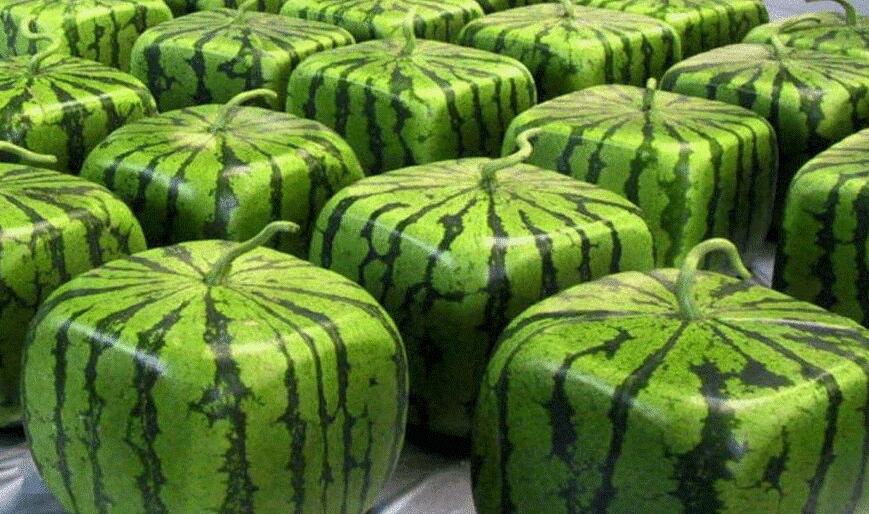- E-mail : info_medicalmarketing@jindunmedical.com
- Phone : +86 21 64057580
- Address : Shanghai China
Watermelon, strawberry were hit with hormone drugs? Is the information spread in the circle of friends reliable?
Hormones are a bit like a "flood beast" to people, as long as anything gets on it, people are afraid to avoid it.
Regarding the issue of "hormones" in food, today we will make it clear at one time.

Are there any hormones in propolis?
The "hormones" we are talking about refer to a variety of chemical substances produced by different endocrine organs in the body, such as insulin, glucagon, thyroid hormone, growth hormone, androgen, estrogen, etc. They regulate the corresponding organs or tissues in the whole body of the organism, thereby determining the living state of the subject and ensuring the continuation and inheritance of the individual's life.
Abnormal hormone levels can directly cause abnormalities in life activities and growth and development. Therefore, most people are always ignorant and respectful of the word "hormone". As soon as you hear what kind of food contains hormones, you immediately become alert.
So, is propolis among the foods that require alertness hormone content?
Propolis is the "adhesive" that bees use to build their hives, a bit like the grout that humans use to build houses. It is a resin (gum) collected by bees from plant spores or broken bark of tree trunks, mixed with the secretions of bees' maxillary glands and wax glands, and processed with beeswax and a small amount of pollen. It has an aromatic smell and stickiness. colloidal solid substance. Studies have shown that the basic components of natural propolis are generally: resin tree incense compound 39% ~ 53%, polyphenols 12% ~ 17%, polysaccharides 2% ~ 3%, beeswax 19% ~ 35%, impurities (containing Pollen, etc.) 8% to 12% [1].
Propolis does not contain the aforementioned hormones. In addition, in the current study, propolis has not been found to have hormone-like biological activity [2], which also confirms this.
As for the rumor that "royal jelly contains hormones, and eating too much is easy to get breast cancer", you can rest assured. As early as the 1980s, experts from the Beijing Academy of Agricultural Sciences used radioimmunoassay to detect the hormone content in royal jelly. The results showed that each 100g of fresh royal jelly contained 416.7ng of estradiol, 108.2ng of testosterone and 116.7ng of progesterone. Note the unit, "ng" means "nanogram," and a nanogram equals one billionth of a gram.
Therefore, the hormone content in royal jelly is very low, much lower than the normal doses of endogenous hormones in beef, pork, mutton, chicken, eggs, and milk that we eat on a daily basis. The estradiol content of beef and mutton is that of royal jelly. The progesterone of mutton is more than 500 times that of royal jelly, and the testosterone of milk is 20 to 150 times that of royal jelly [3].
Watermelon, strawberry were hit with hormone drugs?

With the development of science and technology, the taste and appearance of watermelons and strawberries that people can eat are getting better and better, and they can even eat off-season fruits and vegetables. This is a good thing, but every year there are rumors like this: "This watermelon and strawberry are so big, have they been given hormone drugs?"
Are hormones really that scary? Let's understand it clearly.
Plants themselves contain various hormones that regulate growth and development. However, in agricultural production, producers will use synthetic plant growth regulators. The structure and physiological properties of these regulators are similar to those of natural plant hormones. Some regulators are still functional. It can fight against natural plant hormones to increase crop yield and improve crop quality.
There are currently five types of plant growth regulators: growth hormones, gibberellins, cytokinins, ethylene and abscisic acid.
Plant growth regulators belong to the category of "pesticides" and require scientific experiments and review by regulatory agencies before they are put into production, operation and use. Approval will only be granted if it is proven to be effective, healthy for humans and animals, safe, and environmentally friendly. Most of the plant growth regulators approved for trial in my country are of low microtoxicity; and in the process of agricultural production, producers do not dare to use them in large quantities, because excessive use will damage crops. Therefore, the residues of plant growth regulators are low, the risk of dietary exposure is low, and the safety is guaranteed; there are few food safety incidents caused by the residues of plant growth regulators in the world[4][5].
On the other hand, plant growth regulators don't just work in the human body. It can only work when it binds to its "destined people" (plant hormone receptors in plants). And the human body does not have its "destined person" (receptor) at all, and there will be no "spark of love", so plant hormones will not have hormonal activity on the human body, nor can it play any regulatory role.
In short, phytohormones do exist, but their effects on the human body are negligible. As long as the food is purchased through formal channels, you can put your heart into your stomach.
As for off-season vegetables, there are not so many things to worry about. Most of them are realized in the following three ways: "planting in different places", such as transporting from the south to the north; "planting and harvesting in different places", harvesting vegetables in season and realizing long-term preservation through technology It is the same as storing Chinese cabbage in winter in the north; "greenhouse planting" can be achieved by artificially controlling the light, water, temperature, etc. required for plant growth, and using plant growth regulators in a reasonable and compliant manner.
Are "instant chickens and ducks", eels, fish and shrimp raised with hormones and contraceptives?
In addition to plants, the meat that people often eat is often suspected to be related to hormones, such as chickens and ducks that are released for 40 days, fat and tender eels, fish and shrimp, etc., all because they grow fast and fat, causing people's suspicion.
Here, however, hormones have really failed to help farmers.
The reason why these animals in modern farms grow fast and well is the result of the use of high-quality breeds, carefully proportioned feeds, reasonably optimized lighting, temperature and other breeding conditions under standardized breeding. There is no need at all. Hormones are superfluous.
In other words, hormones may also be doing a disservice.
On the one hand, countries around the world have clearly stipulated that the use of hormones to breed chickens is prohibited. If large-scale farmers take the risk of "illegal production" and use hormones, the risk is too great compared to the benefits; on the other hand, improper use of hormones may lead to increased mortality of chickens and ducks, which is not worth the loss.
In addition to hormones, there are also rumors that fish, shrimp, and eels use contraceptives to promote fat, which also makes many people panic. This is really a rumor of tenacious vitality...
In fact, research data has long shown that after eating the hormone-added feed, the eel may cause metabolic disorders in the body, increase the deposition of body fat, and then show poor disease resistance and even death [6]. In addition, contraceptive pills are so expensive, and each one costs tens of yuan. If you were raising fish and shrimp, would you do this loss-making business?
Eat placenta "big tonic"? This is the hormone food to watch out for!

Compared with these widely known hormone rumors, there are also some "unconventional foods", but because of hormones, many people are "chased".
For example, "Purple River Car", that is, the human placenta, because it contains hormones and other active substances related to growth and immunity, is touted by some people as a miraculous good thing with "anti-aging, nourishing, beauty" and other effects. Take your placenta home to "replenish your body" and take it directly by cooking and making soup.
Is the placenta really that powerful? the answer is negative.
In 2015, some researchers searched for 49 literatures (including human experiments and animal experiments) on raw placenta eating, cooking, and taking freeze-dried capsules during the 64 years from January 1950 to January 2014, and found that. There is no high-quality evidence that the placenta has specific health benefits [7].
Conversely, eating the placenta carries the risk of contracting the disease.
The placenta is the "transit station" for the mother to transmit oxygen and nutrients to the baby. However, in addition to transporting nutrients, some maternal viruses, such as rubella, hepatitis B, HIV, syphilis, etc., may also contaminate the placenta during pregnancy and transmit it to the fetus through the placenta.
Moreover, because the placenta contains a variety of hormones, there have been cases of precocious puberty in children.
In addition, our country clearly stipulates: "No unit or individual may buy or sell the placenta" ("The Ministry of Health's Reply on the Issue of Placenta Disposal after Parturient Delivery" 2005). Therefore, maternal placentas are often disposed of as medical waste. The current placenta circulation is basically a black market transaction, and its source and safety issues are not guaranteed.
In order to maintain the activity of placental substances, they are often processed by freeze-drying or even eating raw, which will increase the risk of infection of the consumer; and if cooked, the active substances in the placenta will also lose a lot, and it will not cost much. The price is necessary to buy food.
Regarding the "entanglement" between hormones and these foods, we should neither panic blindly nor pursue them at will. After understanding the principle, many rumors in life will be self-defeating.
references
[1] Li Jinlong, Zhao Wenting, Wang Pan, et al. Research and application progress of propolis [J]. China Food and Nutrition, 2011(06):22-26.
[2] Zheng Yufei, Jiang Xiasen, Chen Xi, Zhang Cuiping, Hu Fuliang. Research overview of propolis at home and abroad in 2018. Bee Journal, 2019, 4: 1-5.
[3] Chen Minghu, Chen Kun. Analysis of the hormone effect of royal jelly [J]. Bee Journal, 2010, 9(9): 12–14.
[4] http://www.cdcp.org.cn/mobile/lgmtbddht/201405/511a4f31ef9745ae9ae925a3fd84fa60/files/4acea62b3619492e9d76845e1e745b12.pdf
[5] http://www.moa.gov.cn/govpublic/ncpzlaq/201807/t20180711_6153933.htm
[6] Xiao Panpan, Zhang Wen, Li Gang, et al. Seeking evidence, exploring the truth behind the noise, paying attention to the quality and safety of aquatic products (2), is the eel fattened by hormones? [J]. China Aquatic Products, 2012, 440(7 ): 11-13.
[7] Coyle C W, Hulse K E, Wisner K L, et al. Placentophagy: therapeutic miracle ormyth? [J]. Archives of Women's Mental Health, 2015, 18(5):673.
*The content of this article is for the popularization of health knowledge, and cannot be used as a specific diagnosis and treatment recommendation, nor can it replace the face-to-face consultation of a licensed physician, and is for reference only.
*The copyright of this article belongs to Tencent Medical Dictionary. Unauthorized reprinting by media is prohibited. Illegal reprinting will be investigated for legal responsibility according to law. Individuals are welcome to forward to the circle of friends.
*Welcome to search on WeChat and pay attention to the public account "Tencent Medical Code" to get more knowledge about health science.
-
date
2022-03-15
-
location
Shanghai, China










































